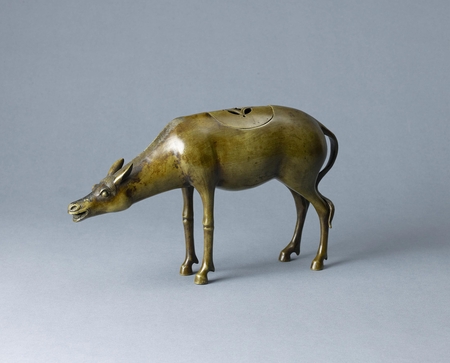Product Description
6889 A sentoku kōro (copper alloy incense burner) in the form of a roba (mule).
Signed: Kamejyo (‘Turtle Woman’)
Japan 18th century Edo period
Dimensions: H. 6¾” x W. 12″ (17.5cm x 30cm)
Hakogaki (note of authentication) inscribed on box: Nagasaki Kamejyo chūzō, kodō, uma, kōro – Cast by Kamejyo, Nagasaki. Chinese metal, horse, incense burner.
Label on box: dai-jyūkyū-go, kodō, uma kōro – Number 19, Chinese metal, horse incense burner.
Tsumura (first name unknown, d.1772). Gō (art name): Kamejyo (Turtle Woman). She was the daughter of Tokujyō (also known as Shuetsu), a metal craftsman working in Nagasaki. Following in her father’s footsteps, she became a successful craftswoman, particularly well known for her metal kōro (incense burners), crafted in a Chinese style. At that time, Nagasaki was the hub of trade with the Dutch and the Chinese, and many Chinese immigrants and visitors lived in the area near the port designated as Tōjin-Yashiki (Chinese Residence).
Kamejyo was said to be a larger-than-life character who was fond of drinking and who liked to treat her friends (who included courtesans of the pleasure quarters in Nagasaki) generously with sake as soon as she received money from her commissions.
Works by the artist can be found in the collections of: Tokyo National Museum; The Museum of Tokyo University of Fine Art.







